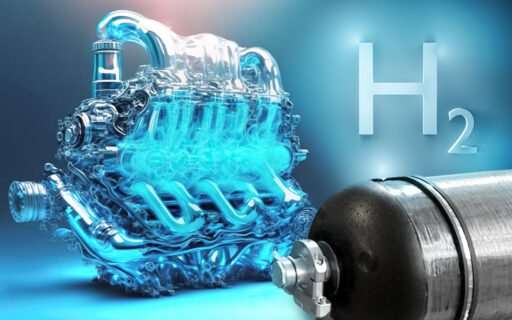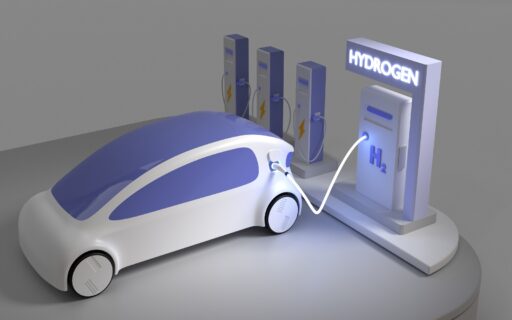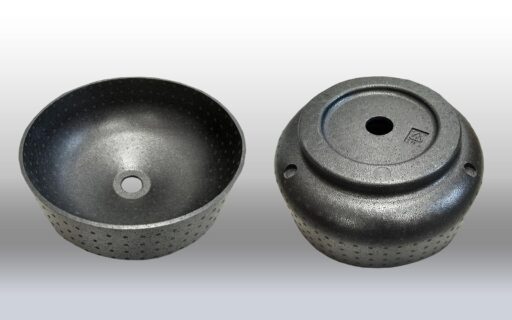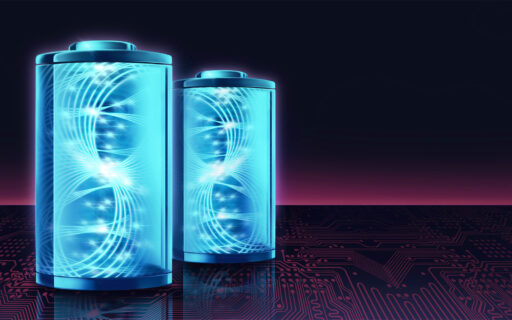Knauf Automotive
Hydrogen
Hydrogen cars: opportunities and challenges
In the face of today’s environmental and energy challenges, hydrogen cars are gaining popularity as an alternative to traditional internal combustion and electric vehicles. Hydrogen, being the most common element in the universe, has great potential as the fuel of the future. Hydrogen-powered cars emit no harmful substances, making them an eco-friendly option for conscious consumers. On this page you will find articles about hydrogen technologies, analyses of opportunities and challenges, and prospects for the development of this innovative technology.
Latest articles
The current challenges of the automotive market require the use of green energy. Does the power grid in Europe depend on the success of the hydrogen engine? We present the most important information and comparison of hydrogen-powered cars with electric vehicles.
How do hydrogen-powered cars work?
Hydrogen-powered cars operate through fuel cells that convert hydrogen into electricity. In a fuel cell, a reverse electrolysis reaction takes place to produce electricity, with water being the only byproduct. The electricity generated in this process is then used to drive an electric motor, allowing for quiet and efficient driving. This makes hydrogen cars environmentally friendly, as they emit only water vapor, and refueling them takes only a few minutes.
What are the advantages of hydrogen cars over electric cars?
Constructing an electricity network capable of meeting the needs of a modernized fleet of electric vehicles in Europe is a very difficult challenge. The demand for electricity in the transport sector may be so great that the necessary infrastructure cannot be created quickly. It will gradually emerge in developed countries, but this process will take many years. It is therefore worth having an alternative available, which not only offers considerable potential in terms of driving efficiency, but also uses a green energy source.
One of the main benefits of hydrogen cars is their quick refueling. Charging electric cars can take from tens of minutes to even hours. Refueling with hydrogen takes only a few minutes, making them much more practical for long trips and everyday use. Also important is the fact that hydrogen cars have a range comparable to internal combustion vehicles, making them more versatile and convenient for users who travel longer distances. However, we can’t overlook the fact that the charging time of battery cells has been systematically reduced. Developments in both fields suggest that we are likely to reach a point where the time difference between hydrogen and electricity will be marginal and irrelevant to the end user.
Hydrogen-powered cars – the price of vehicles and refueling
At present, refueling prices are quite high due to the small number of hydrogen supply stations. In the case of a medium-sized passenger car, we can estimate a cost of 10 euros per 100 kilometers. This is a much higher amount compared to electricity, although comparable figures apply to petrol cars. The development of hydrogen networks and the emergence of further stations offers the chance of a significant fall in prices, but currently the demand for this type of solution is too low.
Will hydrogen-powered cars dominate the market?
Hydrogen-powered cars have a chance in the European, American and Asian markets – but much depends on the volume of production and the approach to their use. The biggest problem seems to be the energy cost of producing this raw material. Another important issue is transport.
Planning for a scenario wherein the production of hydrogen fuel takes place in a location with an efficient electrical infrastructure, constant access to raw material and relatively low electricity demand, seems justified. Probably after deducting the costs of hydrogen transport and processing, the raw material could function as a permanent substitute for oil and electricity. At the moment, however, the small proportion of cars using this type of propulsion makes forecasting difficult: there are only four models currently available in widespread production.
Hydrogen-powered cars have the potential to play an important role in the future of motoring. However, their success depends on a number of factors, including the cost of producing and transporting hydrogen, infrastructure development and support from government policies. If these challenges are overcome, hydrogen cars could become an important part of sustainable transportation around the world.
See also: Future of motorisation – What will the car of the future look like?
Knauf – a trusted partner in the manufacture of plastic automotive components
Hydrogen-powered cars are currently a market niche, but it can explode at any time – as soon as more effective methods of dealing with this element are developed. If the fears of the large automotive companies and electrical infrastructure companies are confirmed, we might have to turn to hydrogen as an alternative fuel to electricity. However, regardless of the nature of the electric car market, it is worth relying on modern solutions. Modern batteries use EPP foam elements, which provide effective and lightweight thermal insulation. They provide additional protection against shocks and damage. One of the companies that provides this extremely effective solution is Knauf Automotive. We also offer other high-end innovations to support electromobility in the vehicles of the future. Contact us and find out how we can help you.





